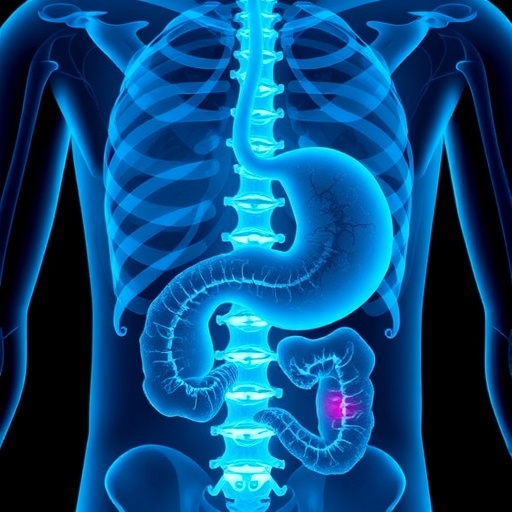In a groundbreaking advance at the intersection of oncology and artificial intelligence, researchers have unveiled a novel machine learning model designed to predict muscle loss following liver transplantation in patients with hepatocellular carcinoma (HCC) who do not initially exhibit sarcopenia. This pioneering work addresses a critical gap in patient care, where postoperative muscle wasting has long been recognized as a daunting complication linked to higher risks of cancer recurrence and mortality, yet remained challenging to predict with traditional clinical tools.
Hepatocellular carcinoma constitutes a major health burden worldwide, being the most common primary liver cancer and often arising in the setting of chronic liver disease. Liver transplantation remains one of the most effective curative treatments for carefully selected patients, offering them a new lease on life. However, despite its promise, the postoperative phase can be complicated by severe muscle deterioration, or sarcopenia, which compromises patient outcomes and survival rates. Understanding and anticipating which patients are at greatest risk of postoperative muscle loss is therefore vital for early intervention and tailored management strategies.
The study, conducted by a multidisciplinary team of scientists and clinicians between 2015 and 2020 at two leading hospital centers, meticulously gathered comprehensive clinical data from 248 HCC patients who underwent liver transplantation. The investigators employed rigorous statistical methods, including propensity score matching and Cox regression, to firmly establish postoperative muscle loss as an independent prognostic factor for cancer recurrence, particularly in patients who had no prior signs of sarcopenia. This crucial insight underscored the need to identify high-risk individuals ahead of time.
Venturing beyond conventional analytics, the research harnessed the power of artificial intelligence, testing a formidable array of 50 distinct machine learning algorithms to determine the most adept in forecasting muscle loss after transplant. Through the application of Recursive Feature Elimination, an advanced technique that isolates the most relevant predictive variables, the team refined their input data to optimize model performance. This process was pivotal in enhancing the accuracy and reliability of the predictions.
Among the myriad algorithms examined, the Imbalanced Random Forest emerged as the standout model. It demonstrated a remarkable ability to discriminate between patients likely to experience muscle wasting post-surgery and those who would not, achieving an impressive area under the receiver operating characteristic curve (AUC) of 0.832 within the non-sarcopenic patient cohort. Such a level of accuracy marks a substantial step forward in prognostic modeling for liver transplant recipients.
What sets this machine learning approach apart is not only its predictive prowess but also its clinical applicability. By integrating routinely collected clinical and biochemical data, the model offers a non-invasive, practical tool that could be deployed in healthcare settings to stratify patients according to their risk profiles. This stratification opens the door to preemptive nutritional and rehabilitative interventions designed to mitigate muscle loss and improve long-term outcomes.
The implications of this study resonate deeply across the domains of transplant medicine, oncology, and rehabilitation. Postoperative sarcopenia has consistently been linked to poorer survival rates and a higher chance of tumor recurrence, yet clinicians lacked a reliable mechanism to anticipate this outcome in patients without evident muscle depletion before surgery. The ability to predict muscle loss prospectively could transform patient management paradigms, shifting them from reactive to proactive care.
Furthermore, the success of the Imbalanced Random Forest algorithm underscores the growing role of machine learning in unraveling complex biological phenomena. Unlike traditional statistical techniques constrained by linear assumptions, machine learning models can capture nonlinear interactions and subtle patterns within high-dimensional datasets, rendering them powerful allies in precision medicine. This approach paves the way for similar innovations in other cancer types and surgical contexts.
In addition to advancing prognostic capabilities, the study highlights the importance of interdisciplinary collaboration. The convergence of hepatology, surgical oncology, biostatistics, and computer science enabled robust methodological design and meaningful interpretation of findings. Such integrative efforts are indispensable in translating computational advances into tangible clinical applications that benefit patients.
Looking ahead, the researchers envisage refinement and validation of their model through prospective studies and larger patient cohorts. Incorporation of emerging biomarkers and imaging features could further enhance predictive accuracy. Moreover, adaptation to diverse populations and healthcare systems will be critical to ensuring widespread utility and equity in care.
As liver transplantation continues to evolve with improved surgical techniques and postoperative management, the integration of artificial intelligence-driven tools promises to elevate patient outcomes. Early identification of those vulnerable to muscle loss allows for timely nutritional support, physical therapy, and therapeutic modulation, ultimately reducing morbidity and enhancing quality of life for transplant recipients.
This study serves as a compelling testament to the transformative potential of machine learning in medicine. By illuminating previously obscured clinical trajectories, such technologies empower clinicians to deliver personalized, anticipatory care that aligns with the ethos of modern oncology and transplantation. The canvas of patient survival and well-being is thereby indelibly enriched.
In the broader context of cancer survivorship, the insights offered by this research may inspire similar predictive endeavors targeting other postoperative complications or treatment-related toxicities. The methodological framework developed could be adapted to a wide spectrum of clinical scenarios, catalyzing a new era of data-driven, individualized medicine.
Ultimately, the fusion of computational intelligence with clinical acumen epitomized in this work illustrates a paradigm shift. No longer constrained by static risk assessments, physicians are equipped with dynamic, data-informed tools to navigate the complexities of cancer care. The advent of such machine learning models heralds a future where precision and prediction converge to redefine standards of excellence in patient-centered healthcare.
Subject of Research: Machine learning-based prediction of postoperative muscle loss in hepatocellular carcinoma patients undergoing liver transplantation.
Article Title: Machine learning predicts post-transplant muscle loss in hepatocellular carcinoma patients without sarcopenia.
Article References: Chen, J., Hu, Z., Li, H. et al. Machine learning predicts post-transplant muscle loss in hepatocellular carcinoma patients without sarcopenia. BMC Cancer 25, 1565 (2025). https://doi.org/10.1186/s12885-025-14973-5
Image Credits: Scienmag.com
DOI: https://doi.org/10.1186/s12885-025-14973-5
Tags: artificial intelligence in healthcareclinical data analysis in HCCearly intervention strategies in oncologyhepatocellular carcinoma treatmentliver transplantation outcomesmachine learning in oncologymultidisciplinary approach to cancer treatmentmuscle deterioration after liver surgerymuscle loss prediction post-transplantpatient care in liver diseasepostoperative complications in cancersarcopenia risk assessment





